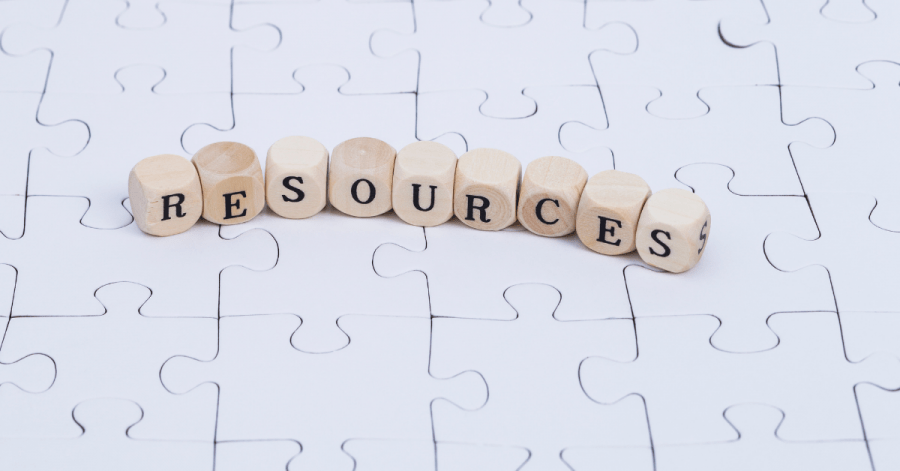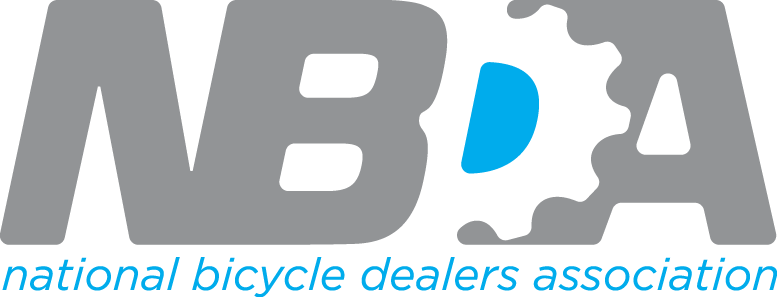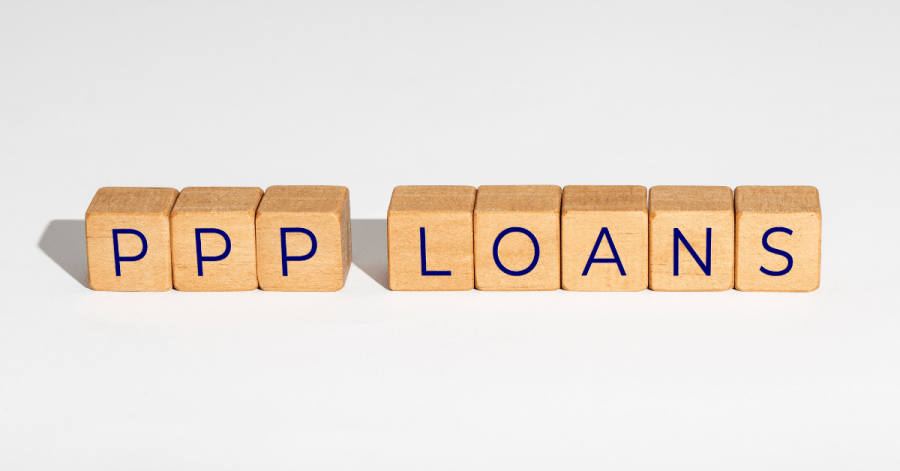COVID-19 Resources for Retailers
Like millions of small businesses across the country, bike shops are facing historic circumstances. Some have closed their doors temporarily while others remain open as essential businesses, continuing to serve customers as demand for bikes and service skyrocket. In these uncertain times, the National Bicycle Dealers Association (NBDA) is bringing together resources from industry thought leaders to support small business owners across the country.
These resources are available thanks to industry donors who are committed to helping bike shops thrive, as well as NBDA member shops who are the heart of the organization and the bike industry.
Federal
- CDC
- OSHA (Occupational Safety and Health Act of 1970)
- S. Small Business Administration
- CISA – Federal Government Declares Bike Repair Essential
- On March 28, the Department of Homeland Security Cybersecurity and Infrastructure Security Agency updated its guidance on the essential workforce to include:
- “Employees supporting personal and commercial transportation services – including taxis, delivery services, vehicle rental services, bicycle maintenance, and car-sharing services, and transportation network providers;”
- and
- “Employees who repair and maintain vehicles, aircraft, rail equipment, marine vessels, bicycles, and the equipment and infrastructure that enables operations that encompass the movement of cargo and passengers.”
- On March 28, the Department of Homeland Security Cybersecurity and Infrastructure Security Agency updated its guidance on the essential workforce to include:
State
- NCSL (National Conference of State Legislators): State Action on Coronavirus (COVID-19)
- This page shows which states have enacted legislation and/or are pending legislation and gives details on what bills are passed and what is contained in the bills that are passed. It will be updated at 5 p.m. ET daily.
- Emergency Sick Leave Bills Passed in Some States
- Check your state’s COVID-19 resource page for updates: State-by-State COVID-19 Resource Pages
Employers
- CARES Act (Coronavirus Aid, Relief, and Economic Security Act)
- Communication shared by PeopleforBikeson 3/27/20:
- On March 27, Congress approved and the president signed a $2 trillion stimulus package into law. This is the third in an ongoing series of relief packages intended to help American workers and businesses facing the economic consequences of COVID-19.
The package includes a number of spending and tax provisions for both businesses and employees that we believe benefit the bike industry: you’ll find those outlined below. Beyond this email, we encourage you to read the comprehensive stimulus analysis on our blogand use our resources page as a source of continuously updated information for retailers and industry on how to best protect and advocate for your business in these unprecedented times.- Small Business Administration (SBA) Paycheck Protection Program Provides small businesses (500 employees or less) with funding to help retain workers and maintain payroll through loans to support salaries, paid sick leave or medical leave, insurance premiums, mortgage payments, or other debt obligations.
- SBA Loan Forgiveness and Debt Relief: Provides loan forgiveness (for the amount spent during an eight-week period) on payroll costs, mortgage interest payments, rent, and utilities. Additional funding for six months of payments is available for those holding existing SBA loans.
- Employee Retention Payroll Tax Credit: Enables a tax credit of 50% of eligible wages (up to $10,000 per employee) for employees who have been retained by companies temporarily shut down by the government. There is no “double-dipping” allowed with other credits.
- Social Security Tax Delay for Employers: Allows employers and self-employed individuals to spread the payment of their portion of the Social Security tax for employees over two years.
- Expansion of the SBA Economic Injury Disaster Loan: Allows for emergency grants (up to $10,000 per business for operating costs) administered by the SBA.
- Expanded Unemployment Insurance: Creates the Pandemic Unemployment Assistance Program, which would protect individuals not currently covered by Unemployment Insurance (UI); and provides an additional $600 per week payment for four months for anyone covered by the Pandemic Unemployment Assistance Program or UI.
- Paycheck Protection Program
- Information and application: https://home.treasury.gov/policy-issues/top-priorities/cares-act/assistance-for-small-businesses
- If you’ve already been accepted to receive an SBA Disaster loan, you can’t apply for a PPP loan for the same intended purpose – but you can refinance a disaster loan into a broader PPP loan if necessary.
- The “Paycheck Protection Program” (the “PPP”) is the most significant provision of the CARES Act for small businesses. The PPP is administered by the Small Business Administration (the “SBA”) and allows employers to obtain forgivable loans to pay for business expenses, including payroll expenses. Such payroll expenses include health insurance, sick leave, retirement, and other benefits. Businesses can also use loans to pay for mortgage interest expenses, rent expenses, and utility expenses. Generally, as long as certain conditions are met, the principal balance of these loans will be forgivable after June 30, 2020.
- Eligibility
- Employers with 500 or fewer employees are eligible for loans under the PPP. Those who are self-employed and also independent contractors and sole proprietors are eligible. Hospitality-based businesses (those whose NAICS code begins with “72”) are eligible as long as the business has 500 or fewer employees in any one location. For example, a restaurant franchisee with 1,000 employees (but no more than 500 employees at any one location) could qualify.
- Amount Available
- The amount that may be borrowed under the PPP is generally calculated as follows:
- The lesser of:
- 5 times the average monthly payroll expenses from “ 1-year from the date on which the loan is made” ( See attached articles for additional details as to what is includible), or
- 5 times the average monthly payroll expenses for the period of time from March 1, 2019, to June 30, 2019, if a seasonal employer, or
- $10,000,000.
- The SBA’s Interim Final Rule shows how to calculate this number.
- The lesser of:
- Permissible Uses
- Loans made under the PPP may be used by employers to pay payroll costs, costs related to the continuation of group health care benefits including insurance premiums, employee salaries, commissions or similar compensations, payment of interest on mortgage obligations incurred prior to March 1, 2020 (but not including prepayments or principal payments), rent expenses, utilities, and interest on any other debt obligations incurred before March 1, 2020.
- “Payroll costs” include:
- Salary, wage, commission, or similar compensation;
- Payment of cash tip or equivalent;
- Payment for vacation, parental, family, medical, or sick leave;
- Allowance for dismissal or separation;
- Payment required for the provisions of group health care benefits, including insurance premiums;
- Payment of any retirement benefit; or
- Payment of State or local tax assessed on the compensation of employees.
- “Payroll costs” do not include:
- The compensation of an individual employee in excess of an annual salary of $100,000, as prorated for the “covered period” (March 1, 2020, to June 30, 2020);
- Taxes imposed or withheld under chapters 21, 22, or 24 of the Internal Revenue Code during the covered period;
- Any compensation of an employee whose principal place of business is outside the United States;
- Qualified sick leave wages for which a credit is allowed under section 7001 of the Families First Coronavirus Response Act (the “FFCRA”); or
- The qualified family leaves wages for which a credit is allowed under section 7003 of the FFCRA.
- Process for Obtaining a Loan
- Employers may go to any existing SBA 7(a) approved lender, or additional lenders determined by the SBA and the Secretary of the Treasury to have the necessary qualifications to process, close, disburse, and service loans made with an SBA guarantee. I have attached a list of the top 100 7(a) lenders.
- Employers will be required to self-certify(This is all that is required. No financial statements, tax returns, etc.):
- (1) that the uncertainty of current economic conditions makes necessary the loan request support the ongoing operations of the employer;
- (2) that funds will be used to retain workers and maintain payroll or make mortgage payments, lease payments, and utility payments(See attached articles for what is includible in payroll);
- (3) that the employer does not have an application pending for a PPP loan for the same purpose and duplicative of amounts applied for or received under a PPP loan; and
- (4) during the period beginning February 15, 2020, and ending on December 31, 2020, that the employer has not already received amounts under the PPP.
- Additional Benefits of the Loan
- The PPP waives guarantee and other servicing fees, does not require certification that the employer is unable to obtain credit elsewhere,waives personal guarantee requirements, caps the interest rate at 4%,provides complete payment deferment relief (including payment of principal, interest, and fees) for not less than 6 months and not more than 1 year, waives prepayment penalties and does not preclude recipients of economic injury disaster loans for purposes other than payroll costs.
- Loan Forgiveness
- Generally, subject to the limitations on loan forgiveness described in the next section below, the principal balance is eligible for loan forgiveness as long as the loan is used for those items defined above as permissible “payroll costs.” This forgiven debt will be treated as a cancellation of indebtedness income except that it will not be included in the employer’s gross income.
- To apply for loan forgiveness, employers will need to deliver the following documentation to the lender:
- Documentation verifying the number of full-time equivalents (“FTE”) employees on payroll and their respective pay rates for the period of January 1, 2020, to June 30, 2020 (including payroll tax filings);
- Documentation confirming rent, utilities, or mortgage interest payment amounts;
- Certification from the employer confirming the truth of the documentation; and
- Any other documentation the SBA may request.
- Limits on Loan Forgiveness
- If an employer reduces its workforce after obtaining a loan, the amount of principal eligible for forgiveness will be reduced. Further, if an employer has already laid off employees prior to the enactment of the CARES Act, that employer will have to rehire its employees or otherwise close the gap between its workforce number as of February 15, 2020, and its workforce number on the date that is 30 days after the enactment of the CARES Act. This rehiring must occur no later than June 30, 2020.
- Additionally, any reduction in compensation to employees in excess of 25% of the employees’ compensation as of February 15, 2020, will also lead to a reduction in the amount of principal eligible for forgiveness. However, employees making more than $100,000 may have their salaries reduced by more than 25% and not have such reduction counted against the amount the employer is entitled to forgive.
- Emergency Relief and Taxpayer Protections
- Mid-sized businesses (those with 500 to 10,000 employees) are also eligible for loans under the Emergency Relief and Taxpayer protections portion of the CARES Act if they make a “good-faith certification” that they will comply with certain requirements listed in the CARES Act.
- Certifications Required
- Among other things, the business must certify that it will do certain things meant to maintain its workforce, including:
- It intends to restore at least 90% of its workforce as of February 1, 2020, including re-storing all compensation and benefits for employees as of the same date. This restoration must be accomplished no later than 4 months after Health and Human Services declares an end to the public health emergency related to COVID-19;
- It will not outsource jobs during the term of the loan (which cannot exceed five years) and for two years after repaying the loan.
- Resources:
- FFCRA (Families First Coronavirus Response Act)
- Full text:
- Synopsis:
- Paid Sick Leave for Workers
- For COVID-19 related reasons, employees receive up to 80 hours of paid sick leave and expanded paid child care leave when employees’ children’s schools are closed or child care providers are unavailable.
- To take immediate advantage of the paid leave credits, businesses can retain and access funds that they would otherwise pay to the IRS in payroll taxes. If those amounts are not sufficient to cover the cost of paid leave, employers can seek an expedited advance from the IRS by submitting a streamlined claim form that will be released next week.
- Complete Coverage
- Employers receive 100% reimbursement for paid leave pursuant to the Act.
- Health insurance costs are also included in the credit.
- Employers face no payroll tax liability.
- Self-employed individuals receive an equivalent credit.
- Fast Funds
- Reimbursement will be quick and easy to obtain.
- An immediate dollar-for-dollar tax offset against payroll taxes will be provided
- Where a refund is owed, the IRS will send the refund as quickly as possible.
- Small Business Protection
- Employers with fewer than 50 employees are eligible for an exemption from the requirements to provide leave to care for a child whose school is closed, or child care is unavailable in cases where the viability of the business is threatened.
- Easing Compliance
- Requirements subject to a 30-day non-enforcement period for good faith compliance efforts.
- Poster Required to be Posted:
- Here is the FFCRA poster that covered employers are supposed to use to notify employees about the new leaves. This notice is to be posted/distributed by April 1st where the employer posts other required employment notices. However, since many employees are not currently in the office, employers can post the notice on their website, email, and/or snail mail the notice to employees.
- Legal FAQ for Employers
- Insurance
- Reimbursement will be quick and easy to obtain.
- Employers receive 100% reimbursement for paid leave pursuant to the Act.
- Paid Sick Leave for Workers
- The amount that may be borrowed under the PPP is generally calculated as follows:
- Paycheck Protection Program
- On March 27, Congress approved and the president signed a $2 trillion stimulus package into law. This is the third in an ongoing series of relief packages intended to help American workers and businesses facing the economic consequences of COVID-19.
- Communication shared by PeopleforBikeson 3/27/20:

Small Business – Access to Capital
- SBA Loans:
- SBA provides a number of loan resources for small businesses to utilize when operating their business. For more information on loans or how to connect with a lender, visit: https://www.sba.gov/funding-programs/loans.
- Online application: https://covid19relief.sba.gov/#/
- How to get access to lending partners? SBA has developed Lender Match, a free online referral tool that connects small businesses with participating SBA-approved lenders within 48 hours.
- 7(a) program offers loan amounts up to $5,000,000 and is an all-inclusive loan program deployed by lending partners for eligible small businesses within the U.S. States and its territories. The uses of proceeds include working capital; expansion/renovation; new construction; purchase of land or buildings; purchase of equipment, fixtures; leasehold improvements; refinancing debt for compelling reasons; a seasonal line of credit; inventory; or starting a business.
- Express loan program provides loans up to $350,000 for no more than 7 years with an option to revolve. There is a turnaround time of 36 hours for approval or denial of a completed application. The uses of proceeds are the same as the standard 7(a) loan.
- Community Advantage loan pilot program allows mission-based lenders to assist small businesses in underserved markets with a maximum loan size of $250,000. The uses of proceeds are the same as the standard 7(a) loan.
- 504 loan program is designed to foster economic development and job creation and/or retention. The eligible use of proceeds is limited to the acquisition of eligible refinance of fixed assets.
- Microloan program involves making loans through nonprofit lending organizations to underserved markets. Authorized use of loan proceeds includes working capital, supplies, machinery & equipment, and fixtures (does not include real estate). The maximum loan amount is $50,000 with the average loan size of $14,000.
- Eligibility for Bike Shops:
- Size: Under $16.5M in average annual receipts
- Generally, receipts are considered “total income” (or in the case of a sole proprietorship “gross income”) plus “cost of goods sold” as these terms are defined and reported on Internal Revenue Service (IRS) tax return forms
- Be a for-profit business
- Do business in the U.S.
- Have invested equity
- Exhaust financing options
- Size: Under $16.5M in average annual receipts
- Check if you are in a declared disaster state: https://disasterloan.sba.gov/ela/Declarations/Index

Resources and Tools
- Contact your Representative and lobby for bike shops to be an “Essential” business in your area.
- Find your elected representative: usa.gov/elected-officials
- Use this letter template shared by our friends at PBMA
- Free Business Counseling:
- Federal: Connect with a SCORE, Small Business Development Center, Women’s Business Center or Veterans Business Outreach Center adviser today: https://www.sba.gov/local-assistance/find/
- NBDA: David DeKeyser from the NBDA is offering a free, initial one-on-one consultation to discuss strategies, best practices, and concerns related to the COVID-19 pandemic. You can email him here.
- Disaster Loan Assistance:
- The U.S. Small Business Administration provides low-interest, long-term loans for physical and economic damage caused by a declared disaster.
- Declared Disaster Areas
- This list will continue to be updated by the SBA, but currently, all of the US is declared a Disaster Area.
- Economic Injury Disaster Loan
- If you are in a declared disaster area and have suffered economic injury regardless of physical damage, you may qualify for an Economic Injury Disaster Loan (EIDL).
- NBDA Dealer Forum
- Stay connected and find out what fellow retailers are doing across the country.
- Log in or register an account here.
- Social Media/Marketing Materials
- “Cycling Has Not Been Canceled” Marketing Photos, made by the NBDA
- Feel free to use these photos in your marketing or use the concept and make your own.
- NBDA’s “Buy Where You Ride” Campaign
- Use these resources to encourage your customers to shop with you online.
- Articles:
- Everything you need to know about riding your bike during the COVID outbreak– BicycleColorado.org
- How to Ride Safely Amid Coronavirus Concerns– Bicycling.com
- CYCLING & COVID-19: YOUR SCROLLING CONTENT FEED– USA Cycling
- Generously Fund Cycleways, Experts Say As Covid-19’s Spread Boosts Bicycle Use– Forbes
- Outspokin’
- David DeKeyser has written some great articles on the topic of Coronavirus and how to handle business disruptions.
- Articles:
- BRAIN Magazine:
- PeopleForBikes Advocates for Bikes Amid Growing COVID-19 Disruption
- Guest editorial: Some resources for an industry dealing with COVID-19
- Heather Mason: This could be the start of Bike Boom 2020
- Business booms in New York, but COVID-19 restrictions could cool things down
- Some Bay Area stores declare themselves ‘essential’ and remain open despite the order
- Retailers change policies and practices as COVID-19 concerns escalate
- Mississippi shop owner promoting cycling during COVID-19
- COVID-19 tips for retailers and fitters
- For one North Carolina bike shop, it was time to voluntarily close
- Confusion reigns as states reverse course on ‘essential’ status for bike shops
- PeopleForBikes Advocates for Bikes Amid Growing COVID-19 Disruption
- COVID-19 Relief Resources for Small Businesses
- Here is a spreadsheet shared by our friends at PBMA that has financial resources for each State and includes some unique Private Resources: https://docs.google.com/spreadsheets/
- “Cycling Has Not Been Canceled” Marketing Photos, made by the NBDA
NBDA Webinars
Key Communication Strategies During the COVID 19 Crisis
(aired 4/1/20)
Using Online Service Scheduling to Manage Interaction During COVID 19
(aired 4/2/20)
911 For You and Your Small Business
(aired 4/3/20)
NBDA COVID-19 Letter Released 3/16/19

Now is the time to become a member as we join together to make one another stronger. Whether you’re a retailer or an industry partner, your membership in the NBDA is one of the best investments you’ll make this year.
Learn more about the benefits of being a member and join now.


